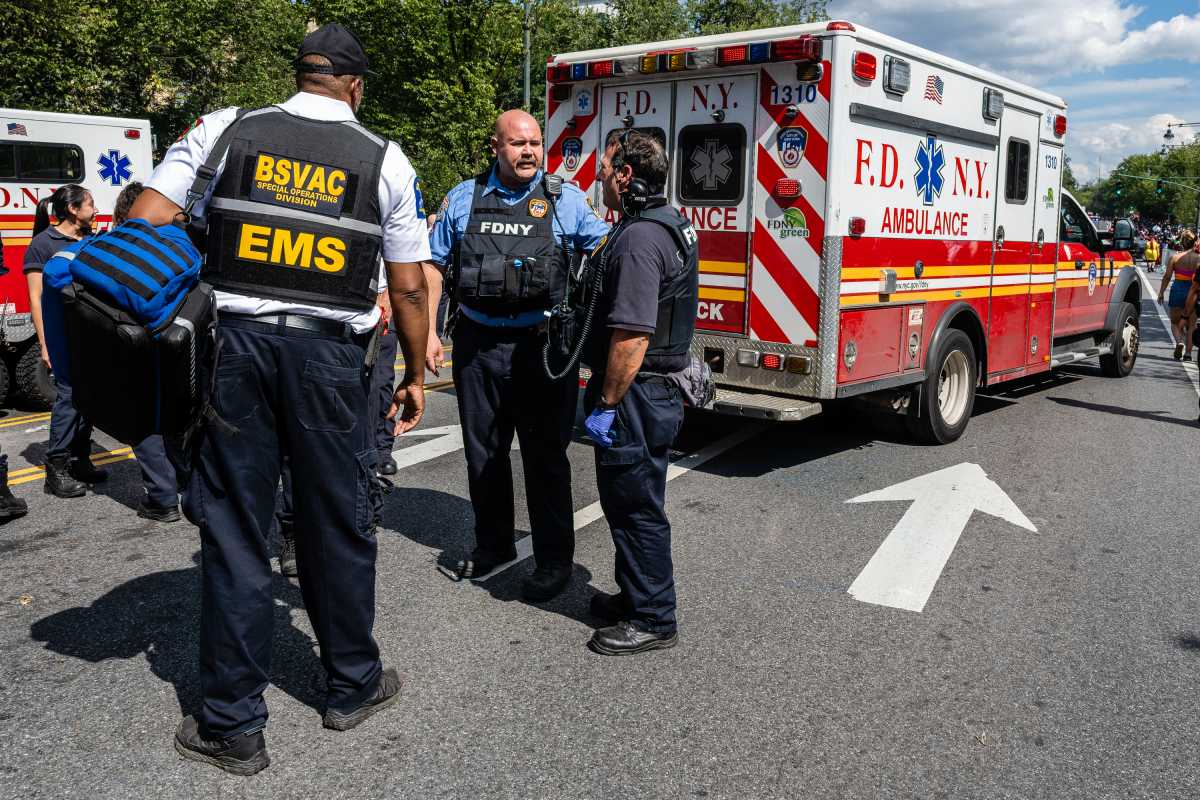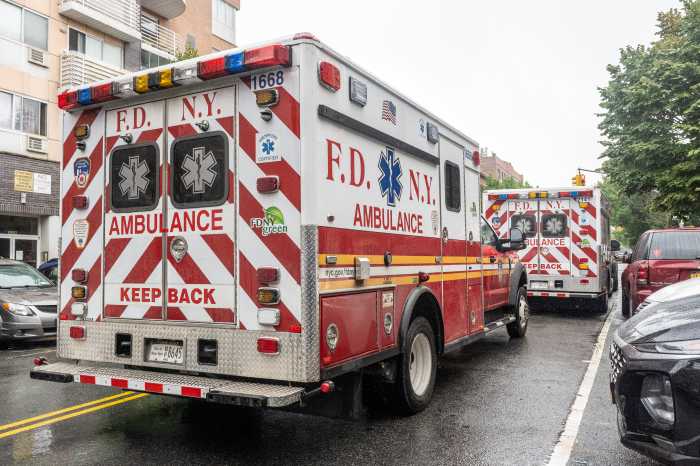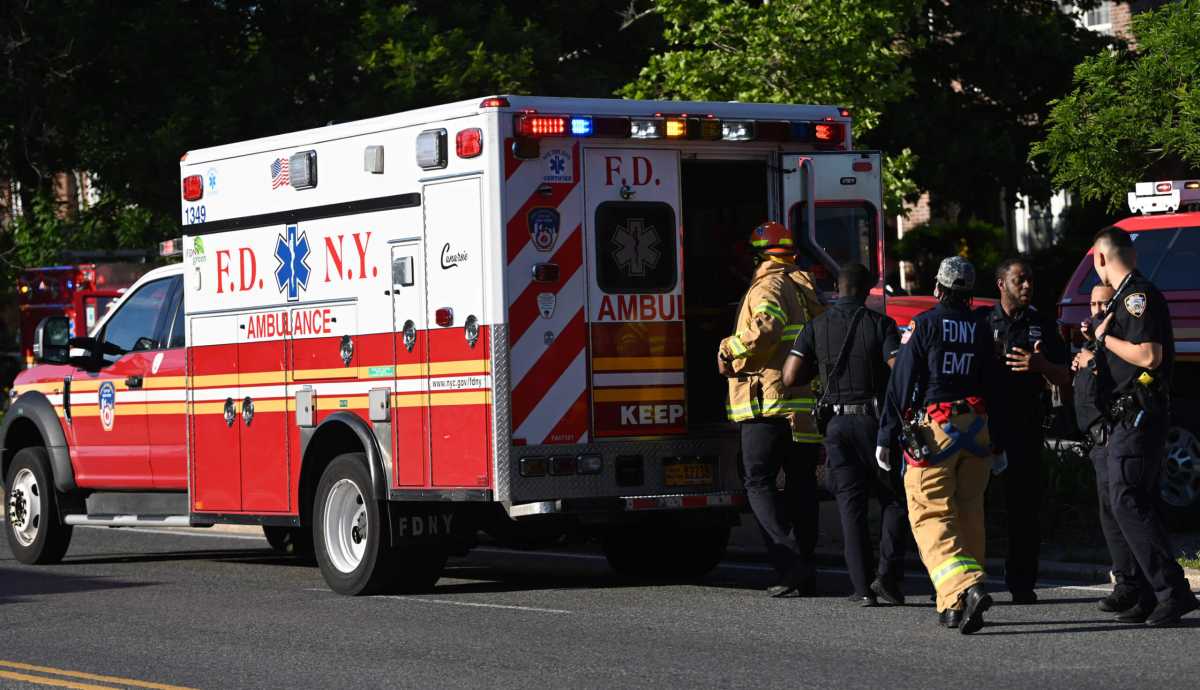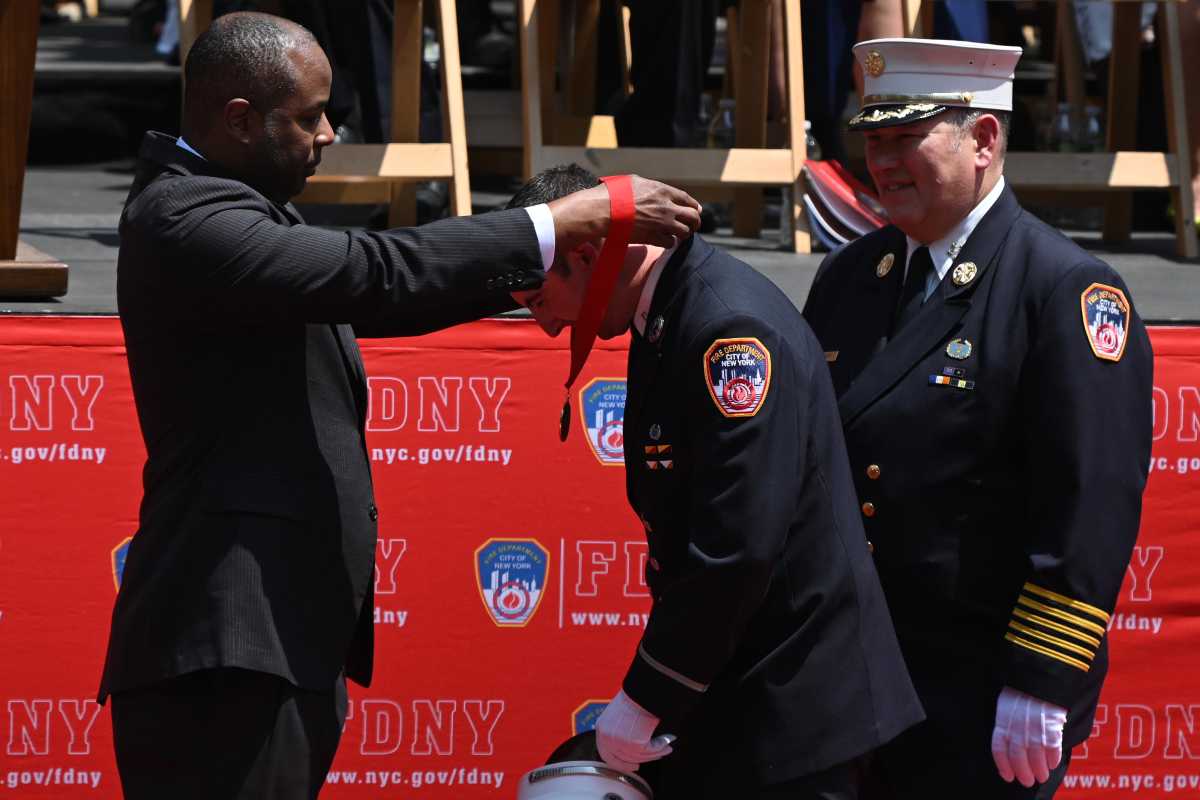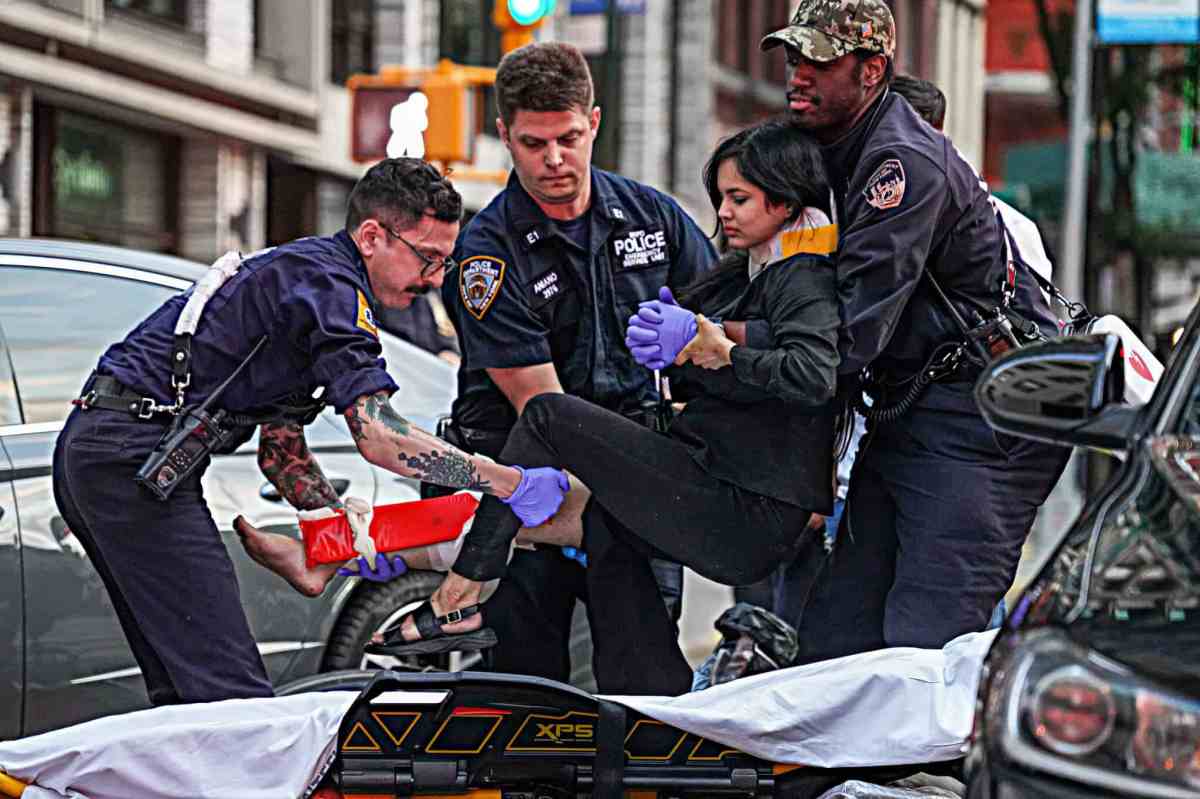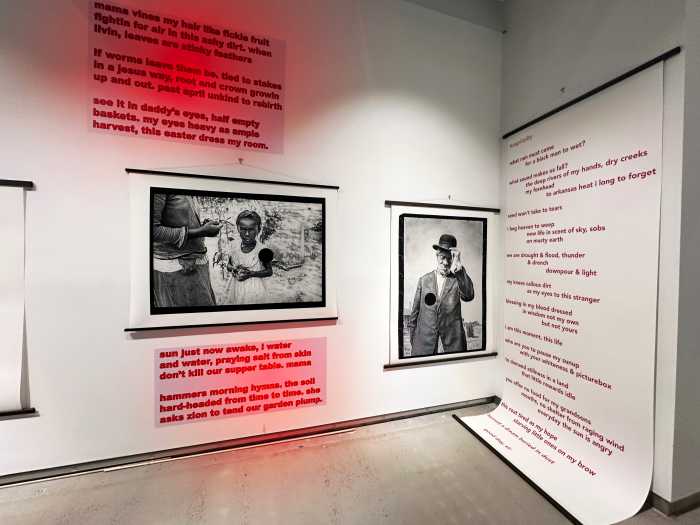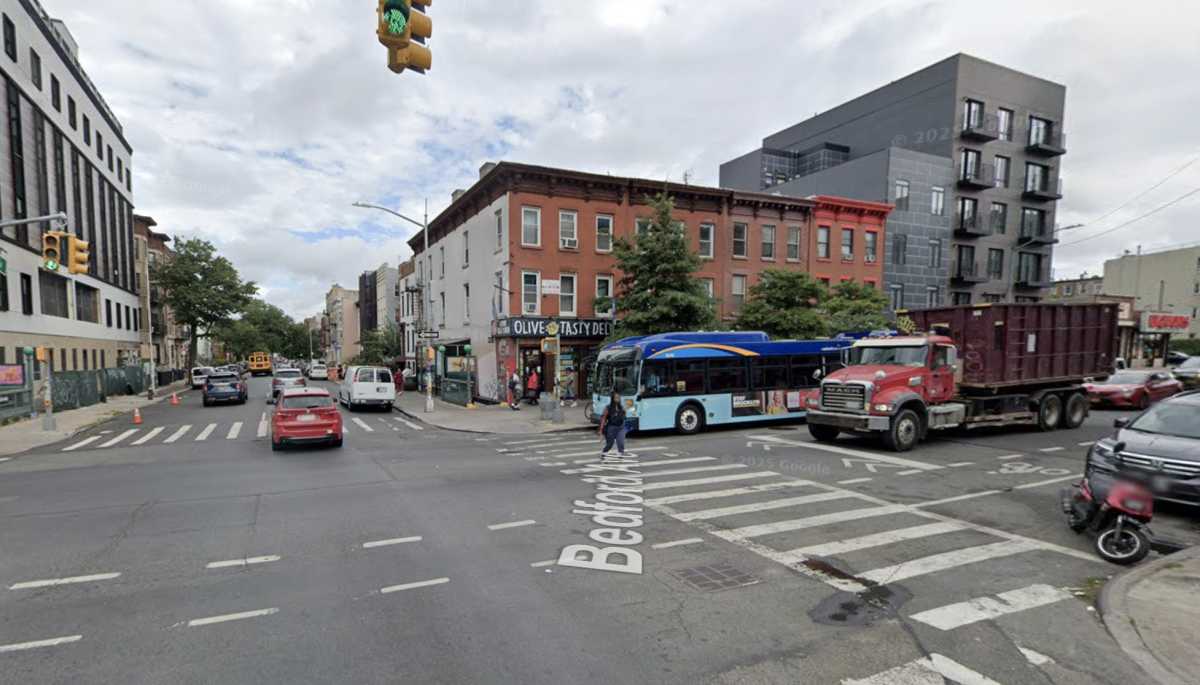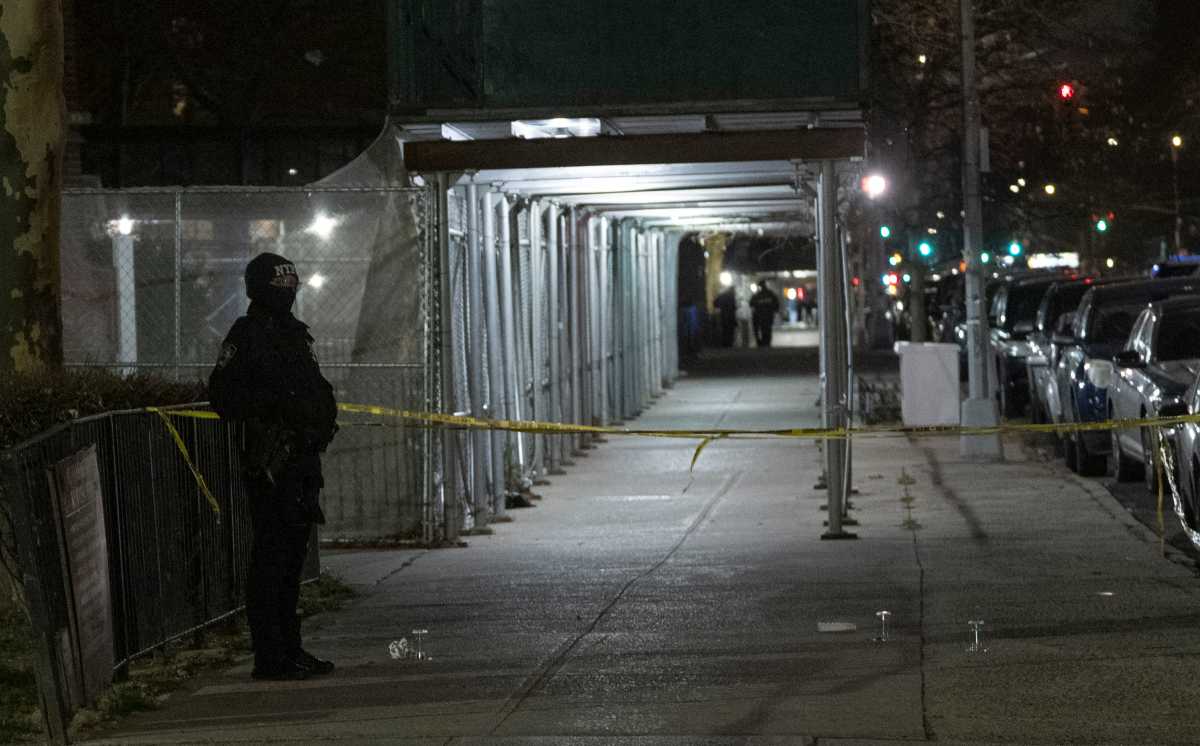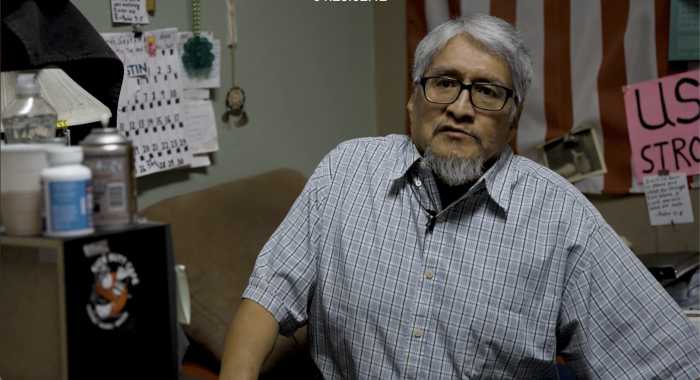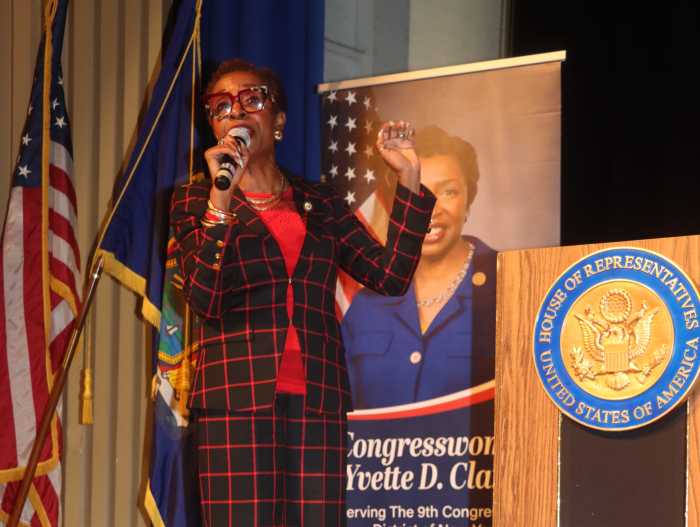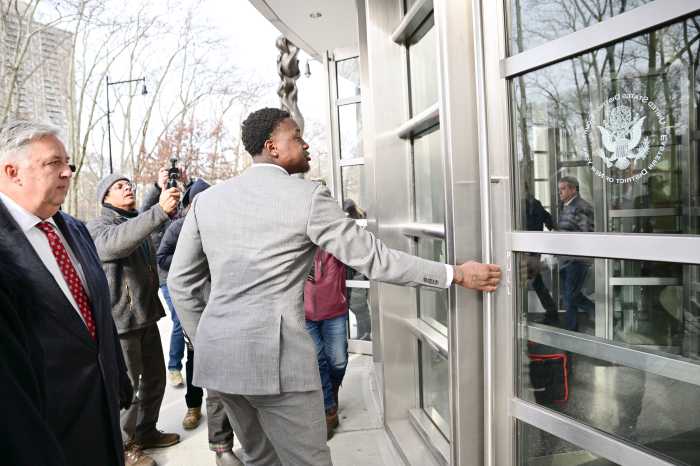FDNY EMS Local 2507, which represents more than 4,000 emergency medical technicians, paramedics and fire inspectors in New York City, launched a new public awareness campaign on social media Oct. 6 with the hashtag #StandWithEMS.
The campaign follows the release of the Mayor’s Management Report, which showed an increase in emergency response times. It aims to draw attention to the pay disparity that has plagued the city’s emergency medical services for years and highlights the inequities FDNY EMTs face both on and off the job. The campaign calls on the public to take action by sharing on social media whether they will #StandWithEMS.
Union leaders say the pay gap has led to a 70% attrition rate within the first five years on the job — a figure they describe as unsustainable, especially as call volumes have risen in recent years. Union representatives expect that more than 1,500 members, or about 37% of the department’s workforce, will leave within the next 12 months.
FDNY EMS Local 2507 President Oren Barzilay noted that despite FDNY EMS being the busiest emergency medical response agency in the world, and with world-class professionals, frontline medical first responders are paid less per hour than babysitters or dog walkers in New York City.
According to the campaign, an FDNY EMT’s take-home pay is $25,332 — less than half the city’s average cost of living, which stands at $64,026. By comparison, EMTs and paramedics in neighboring Nassau County can earn up to $142,000 a year after 12 years on the job, with a starting salary of $50,000.
Because of the low pay, many FDNY EMTs rely on programs such as SNAP and HUD Section 8 housing vouchers to get by. Others are homeless, living out of their cars or staying with relatives and friends. Some of the city’s “street doctors” live outside New York City because they can’t afford the rent, facing hour-long commutes that turn an eight-hour shift into a 12-hour ordeal.
Many EMS members also work second or third jobs to make ends meet.
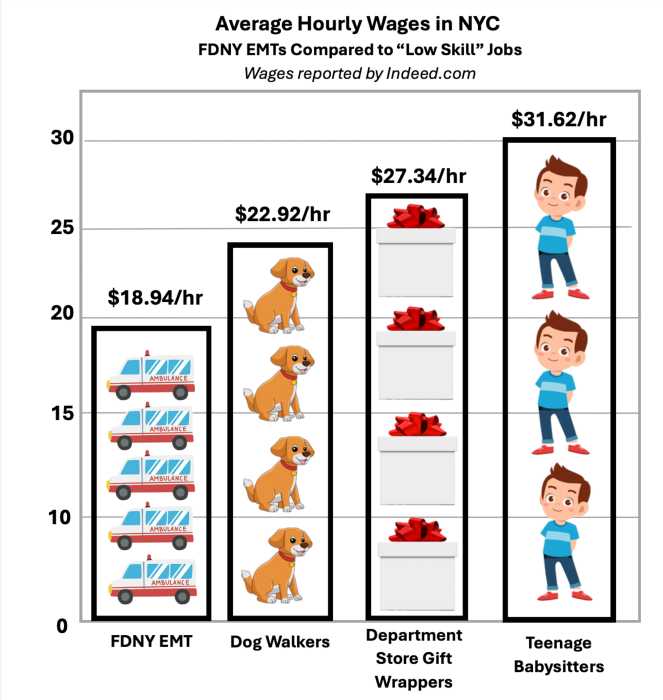
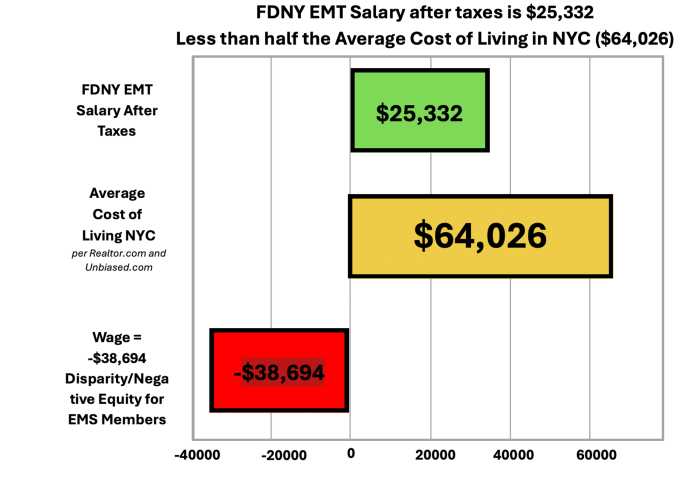
“Despite commitments this administration and the FDNY made over decades past, the members of EMS are not treated with the commensurate respect and wage equity as our city’s frontline first responder peers at police and fire,” Barzilay said, urging the city to invest as much in medical first responders as it does in police officers and firefighters.
Many FDNY EMTs say they join the department because they want to make a difference in their communities and help people while enjoying the camaraderie and bonds they form with colleagues.
FDNY EMT Taysha Soto enlisted in October 2024 and is assigned to EMS Battalion 20 in the Bronx.
The Staten Islander and mother of two said she joined the department because the EMT profession gives her a sense of purpose and allows her to make a difference. However, she questions why the city doesn’t pay its employees a livable wage, given the dangerous situations EMTs face on a regular basis.
“I am a single mother commuting from Staten Island to the Bronx; I have to pay for tolls and gas. Obviously, when you include regular bills on top of that, it’s not livable,” said Soto, who told Brooklyn Paper she is often drained physically and mentally after a 12-hour shift and must pick up overtime to earn a “decent” check. “When I look at my paycheck without overtime, it comes out to $1,100–$1,200 biweekly. I know people that work for Uber Eats making more than me. We are putting our lives at risk, and we feel very underappreciated.”
Her colleague, Mitchell Tarnapolsky, joined the FDNY EMS in 2020. He was drawn to the profession after saving a drowning victim while working as a city lifeguard. Saving lives and helping people is gratifying, he said, but it would be more rewarding if he could afford to live in the city.
“I am praying EMTs and paramedics get a contract from New York City because we have been without one for nearly four years. With the current working conditions and the low pay we get for doing our best to help New York, it is hard to recommend that anyone join EMS,” Tarnapolsky said.
The year 2024 was the busiest in FDNY EMS history, with more than 1.63 million civilian medical emergencies, including critical care responses for stabbings, gunshots, cardiac arrests, strokes and drug overdoses. The department says 2025 is on pace to surpass 1.7 million medical emergencies.
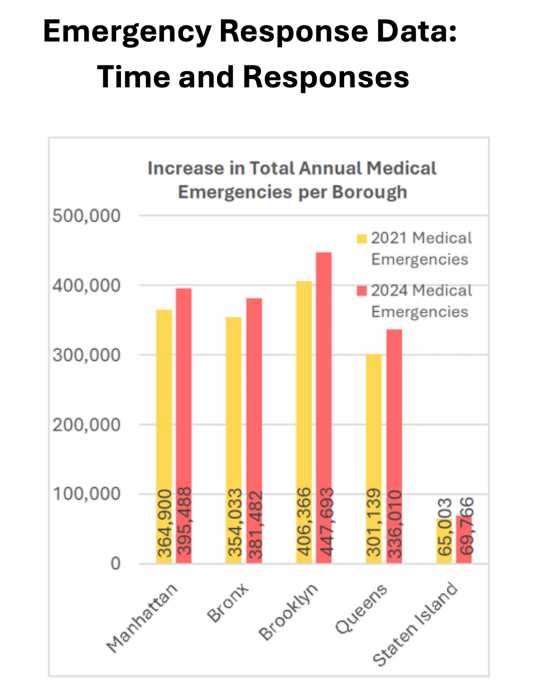
Boroughwide, Queens has seen the largest increase in responses to medical emergencies, up 11.6% from 2021 to 2024, followed by Brooklyn, up 10.2%; Manhattan, up 8.4%; the Bronx, up 7.8%; and Staten Island, up 7.3% over the same period.
“Every single day our members are surrounded by the harsh realities and dangers of New York, shoulder to shoulder at active crime scenes, fires and disasters with our peers at NYPD and Fire,” Barzilay said. “The city has continually failed to uphold commitments it has made to our workforce, and all we ask for is a wage commensurate with being on the front lines.”



